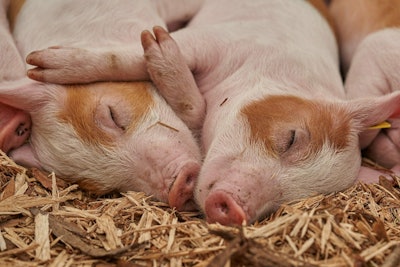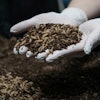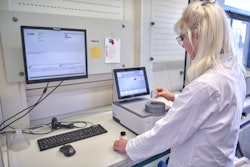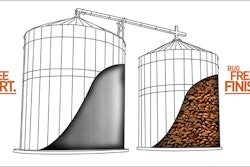
在过去的20年里,大豆粉(座)包括sion levels in pig diets have become heavily dependent on pricing. This is at the detriment of overlooking the value of SBM beyond its primary attributes as a source of amino acids.
Shifting diets to higher inclusion levels of crystalline amino acids and distillers dried grains with solubles (DDGS) — a 35% increase between 2000 and 2017 — hinders soy’s beneficial components, such as isoflavones, saponins and phenolic antioxidants.
These vital compounds improve immune responses, provide anti-inflammatory benefits and enhance growth performance of pigs exposed to viral disease challenges.
Presented at the International Conference on Swine Nutrition in August, results from a soy checkoff-funded study,Evaluation of the Potential Benefit of Soybean Meal on Gain and Feed Efficiency of Growing Pigs, among several other independently evaluated, unbiased studies confirmed an economic return and direct and positive relationship between SBM and improved total weight gain and feed use efficiency in developing pigs.
“This checkoff-supported study points out that formulating for least cost doesn’t always add up to maximum profit, especially in the volatile commodity markets that face the swine sector right now,” says Dean Boyd, Ph.D., a consulting animal nutritionist, adjunct professor of animal nutrition at North Carolina State University and Iowa State University, and a principal investigator for the study.
“With pricing as the dominant factor driving ingredient decisions, little consideration is given to the intrinsic value of soybean meal, which offers an essential source of health-promoting compounds and amino acids.”
Given this direct negative effect when switching pig diets over for a short period of time and reducing SBM inclusion, some nutritionists indicate there may be a SBM level below which growth and feed conversion are compromised that could be impacted by growth phase and health status.
Resulting considerations for SBM use contribute to high-quality diets, reduce swine stress levels and enhance animal performance, biology and gut health.
“These experimental outcomes accentuate the importance of soybean meal on growth and feed efficiency for growing and finishing pigs,” says Keenan McRoberts, Ph.D., vice president of science and program strategy for United Soybean Board.
“应用estimati需要进一步的工作ng minimum soybean meal inclusion levels to maximize growth and potential economic returns for pig farmers,” McRoberts continues.
“Consequently, this foundational applied work establishes a new starting point for soybean meal use and value in pig rations — work that must be advanced further, together with industry partners, to evaluate implications under different production systems and seasons.” ■





















![Optimix Andritz Scaled[1]](https://img.feedandgrain.com/files/base/wattglobalmedia/all/image/2023/05/optimix_Andritz_scaled_1_.645eb7a1ed508.png?auto=format%2Ccompress&fit=crop&h=112&q=70&w=112)